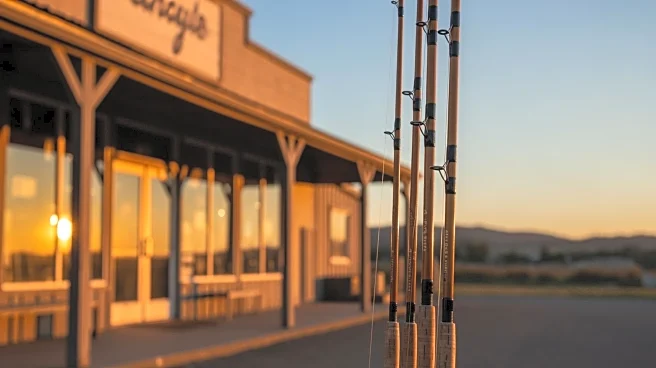What's Happening?
Orvis, a well-known outdoor and sporting goods retailer, has announced plans to close over 31 stores and five outlets by early 2026. The company currently operates 70 retail locations across the United
States. According to Orvis president Simon Perkins, the closures are attributed to the 'unprecedented tariff landscape' introduced under President Trump's administration. Perkins expressed gratitude towards the company's associates, acknowledging their contributions to the Orvis brand and local communities. The closures will affect several locations, including three in New York: Millbrook, Williamsville, and New York City.
Why It's Important?
The decision by Orvis to close a significant number of its retail locations highlights the impact of tariff policies on U.S. businesses. These closures could lead to job losses and affect local economies where these stores operate. The tariff landscape has created financial pressures for companies reliant on international supply chains, forcing them to reassess their operational strategies. This development underscores the broader challenges faced by the retail industry in adapting to changing economic policies and maintaining profitability amidst increased costs.
What's Next?
As Orvis proceeds with its closure plans, affected employees and communities may seek support and alternative employment opportunities. The company may also explore strategies to mitigate the impact of tariffs, such as adjusting its supply chain or pricing models. Other retailers facing similar challenges might follow suit, leading to further industry consolidation. Stakeholders, including policymakers and business leaders, may engage in discussions to address the economic implications of tariff policies and explore potential adjustments to support affected industries.
Beyond the Headlines
The closures by Orvis could signal a shift in the retail landscape, where companies increasingly prioritize online sales and digital presence over physical storefronts. This trend may accelerate as businesses seek to reduce overhead costs and adapt to consumer preferences for online shopping. Additionally, the situation raises questions about the long-term sustainability of tariff policies and their impact on domestic industries, potentially prompting debates on trade policy reform.











